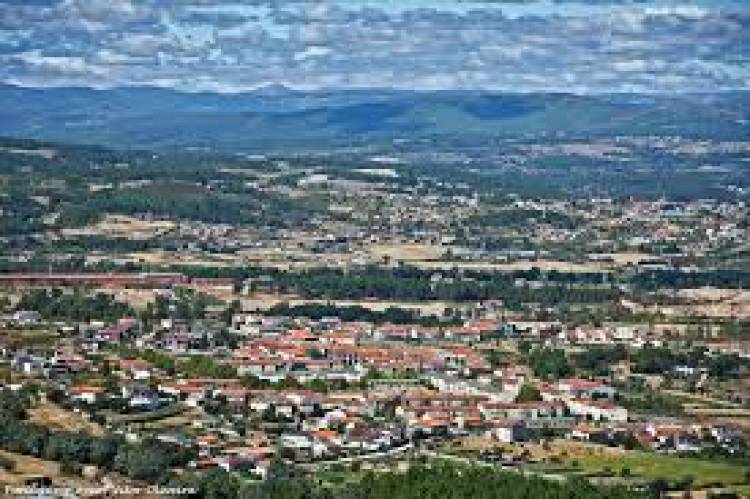17 Things Hardly Anyone Knows About Portugal
17 things hardly anyone knows about Portugal
Portugal is known for its beautiful beaches, port wine, and a great passion for football. But there are also some facts that are less known to most. TRAVEL BOOK reveals a few.
1. Portugal and England have the oldest diplomatic alliance in Europe
The two countries entered into an alliance as early as 1373, which led to the Treaty of Windsor in 1386 and is still in force today.
In addition to "eternal" friendship, the Portuguese and English also assured each other of support in many other areas, such as military and economic issues.
2. The English claim to have invented port wine
Speaking of the English, they are not only among the main consumers of port wine, they also believe that they invented it in the 17th century by adding brandy to wine from the Douro region to prevent that he gets angry when exporting to England.
The Portuguese counter that there was already a process in the heyday of seafaring that stopped fermentation and thus retained the sweetness of the grape.
3. Until 1928, left-hand traffic was permitted in Portugal
This also has something to do with the influence of the English, and with the fact that right-hand traffic in Europe was only introduced by the French in many occupied countries under Napoleon.
In Portugal, right-hand traffic was not switched to until June 1, 1928.
4. France is the second home of the Portuguese
More than a million Portuguese and Portuguese people currently live in France.
This also explains why there were so many Portuguese fans in the stadiums when Portugal played during Euro 2016.
5. Portugal has almost 3000 kilometers of coastline
It may sound strange, but while the country is quite small, it has thousands of kilometers of coastline.
Reason: In addition to the mainland (approx. 950 kilometers of coastline), the island groups of Madeira (approx. 250 km) and the Azores (approx. 670 km) also belong to Portugal.
6. Portugal has the longest bridge in Europe
The Ponte Vasco da Gama is 17.2 kilometers long and was built between 1995 and 1998 on the occasion of the Expo ’98 over the river Tagus (currently Tajo).
The project that connects Lisbon with the cities south of the Tagus and made the route further south faster for motorists cost almost a billion euros.
7. The richest Portuguese is ...
... not Cristiano Ronaldo, but a Portuguese woman: Maria Fernanda Amorim, widow of the entrepreneur America Amorim.
The US magazine Forbes estimates her fortune at 4.17 billion euros. The family got rich from the cork business.
8. Rio de Janeiro was once the Portuguese capital
In 1807 the Portuguese court fled to King John VI. before Napoleon's troops in the former colony of Brazil, more precisely to Rio de Janeiro.
From 1808 to 1821 the city on the Sugar Loaf was the capital of Portugal.
9. The Japanese specialty tempura was invented by the Portuguese
What is on the menu in every Japanese restaurant today goes back to Portuguese Jesuits. The missionary work of the population - according to their actual mission - was only partially successful, but the population adopted the method of preparation of "tempura", in which fish and now other foods are fried in a batter.
Tempura is derived from Portuguese. Which word exactly is questionable. Temples (e.g. wort) would be possible, but also Temples, a form of fasting previously practiced by Christians.
10. Portugal does not have a Codfish itself
If there is anything that people associate with the Portuguese, it is the famous Codfish, or stockfish, which is dried in a certain way. But: the cod, which is mostly used for this, is practically nonexistent in Portuguese waters, which is why the fish has to be imported. And in such abundant quantities that it is enough for feasts at Christmas, New Year, Epiphany, Easter ...
Codfish a Bras is the name of this variant of the Portuguese favorite dish
Codfish a Bras is the name of this variant of stockfish, which is popular in Portugal.
11. The first Portugal flag was similar to the Finnish one
The first flag of the Portuguese looked like a blue cross on a white background. Only the five coats of arms in the middle are blue today. The green in the flag was only added in 1910, since then it has had its current appearance.
12. A Portuguese woman brought tea to England
Without Katharina von Braganza, the typical British tea time would probably not exist.
Because it was the Portuguese Infanta who brought the tea she liked so much to the island in the 17th century because of her marriage to the English King Charles II.
13. Like Rome, Lisbon has "7 hills"
According to legend, the metropolis on the Tagus was founded in the middle of seven hills, which are said to be the hills Sant’Ana, São Roque, Santo André, São Jorge, Santa Catarina, Chagas, and São Vicente.
However, today it is no longer entirely clear what the legend can be traced back to because Lisbon actually has many more surveys.
14. Fado literally stands for the fate
What you can already hear in the sometimes sad, wistful sounds, is also reflected in the name.
The word fado goes back to the Latin fate, which means: destiny.
15. Port wine has its own type of boat
Rabelo boats are the name of the ships that are around 20 meters long and from the 18th century onwards were used to bring port wine from wine regions in the Douro Valley to Porto or Vila Nova de Gaia.
A crew of about six was required to operate the ship and load the barrels. Today the Rabelo boats are only used for tourist purposes or celebrations.
16. The oldest bookshop in the world is in Lisbon
The Book store Bertrand opened in Lisbon in 1732 and has been in operation ever since.
This also brought the bookstore in the Wheezing district an entry in the Guinness Book.
Address: Street Garrett, 73-75 - Wheezing - Lisboa
17. Benfica Lisbon is the second-largest football club in the world
For a long time, the Portuguese capital city team was number 1 among the football clubs with the largest number of members in the world - until another club with red and white club colors overtook Benfica: FC Bayern Munich.
This now has almost 293,000 members, whereas the Portuguese association “only” has around 231,000.















